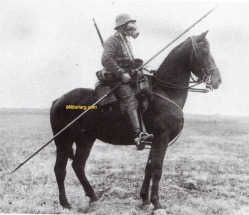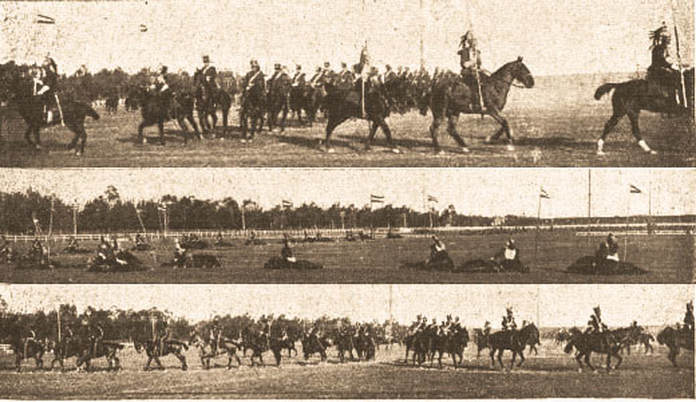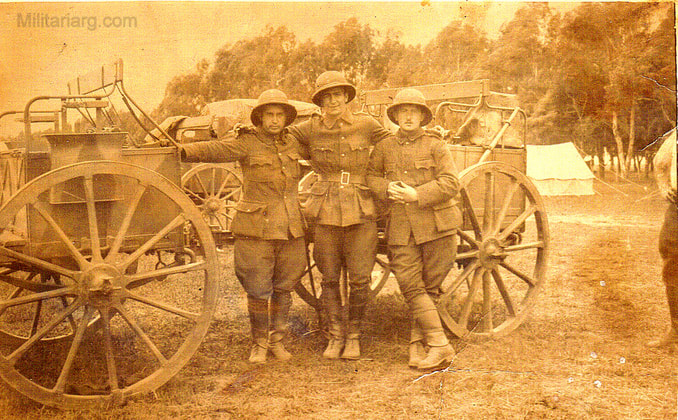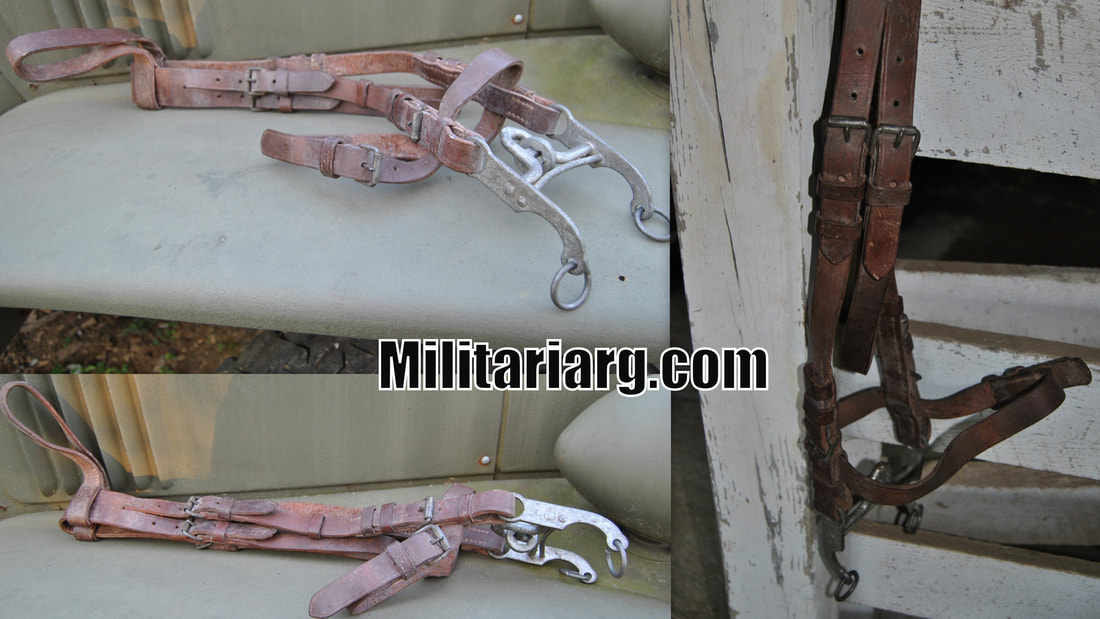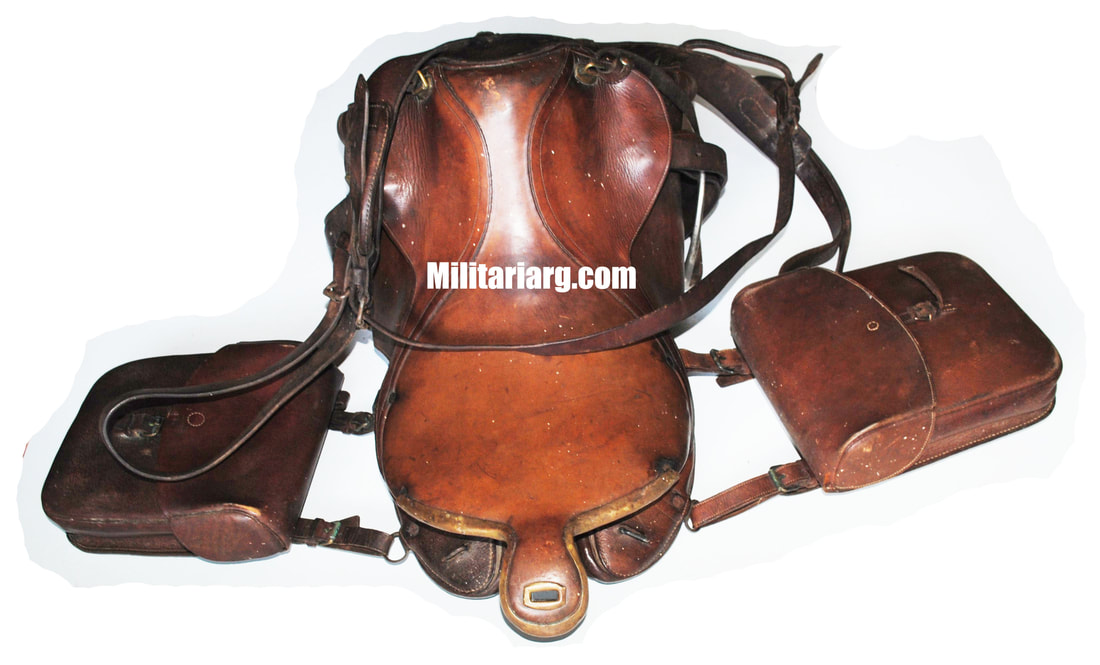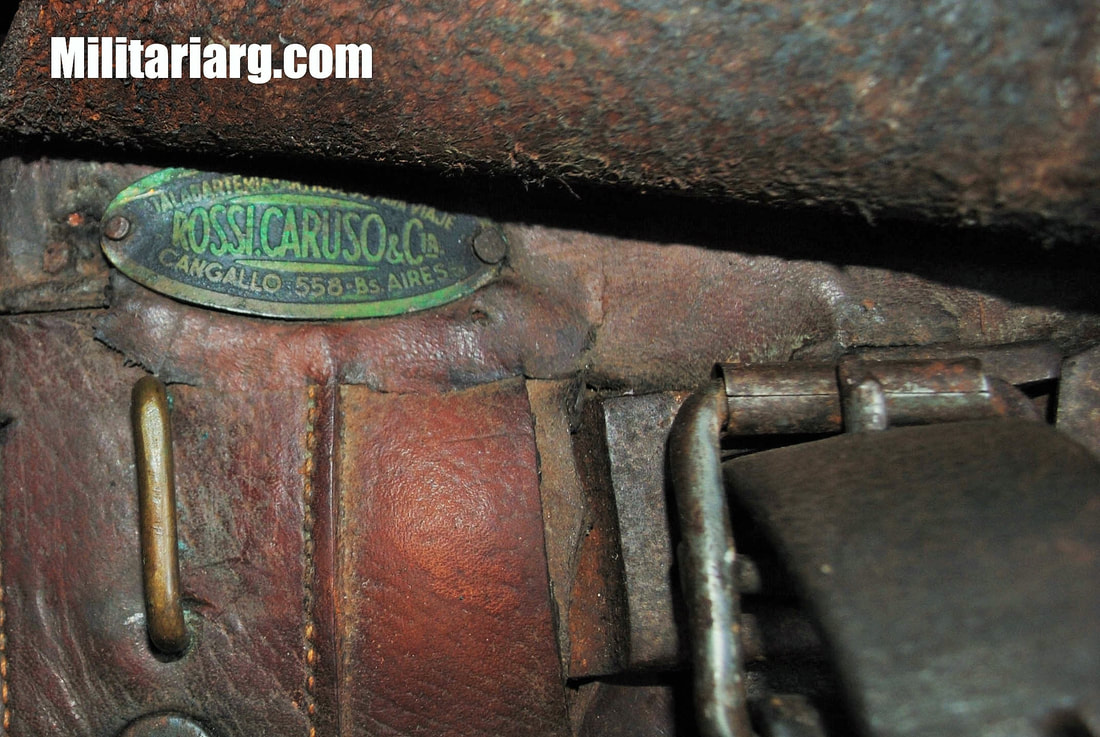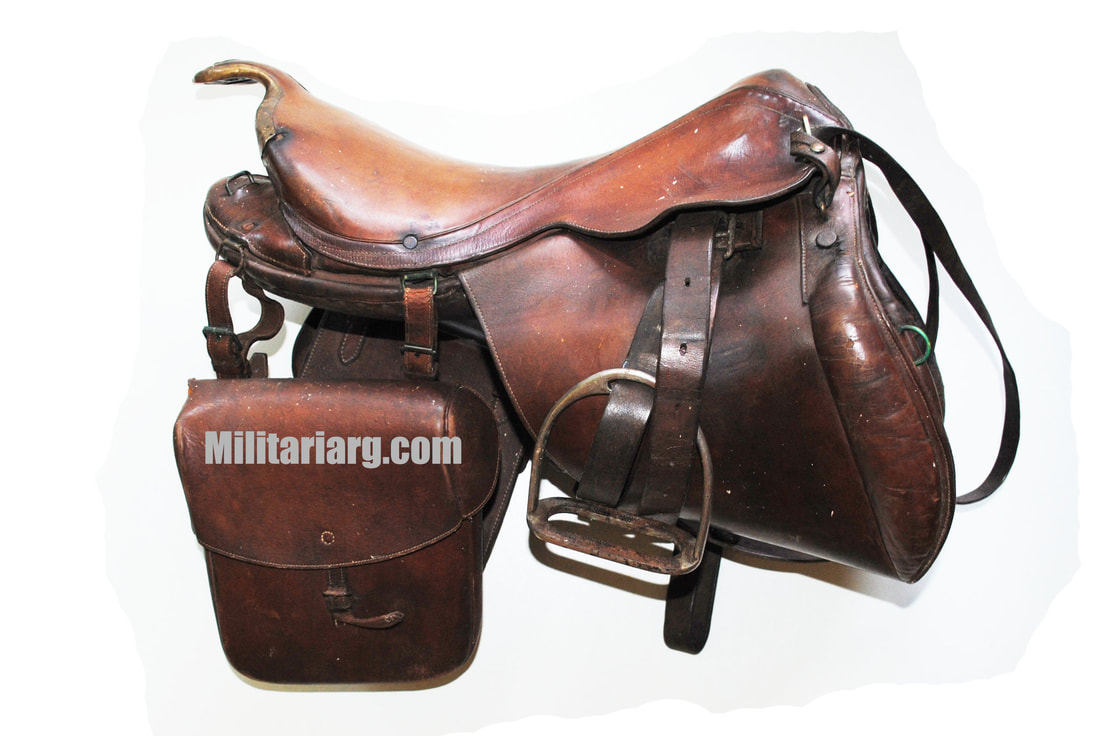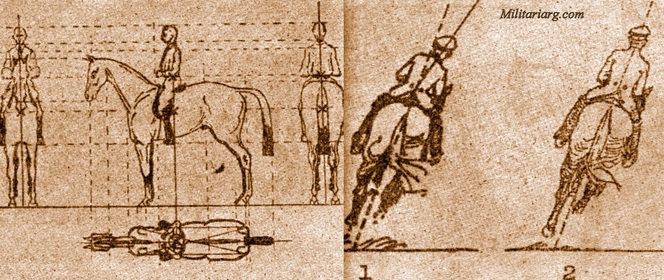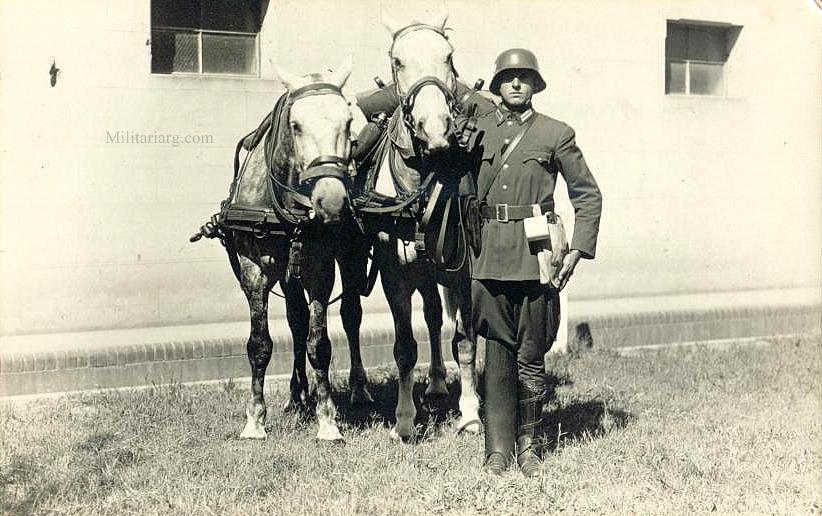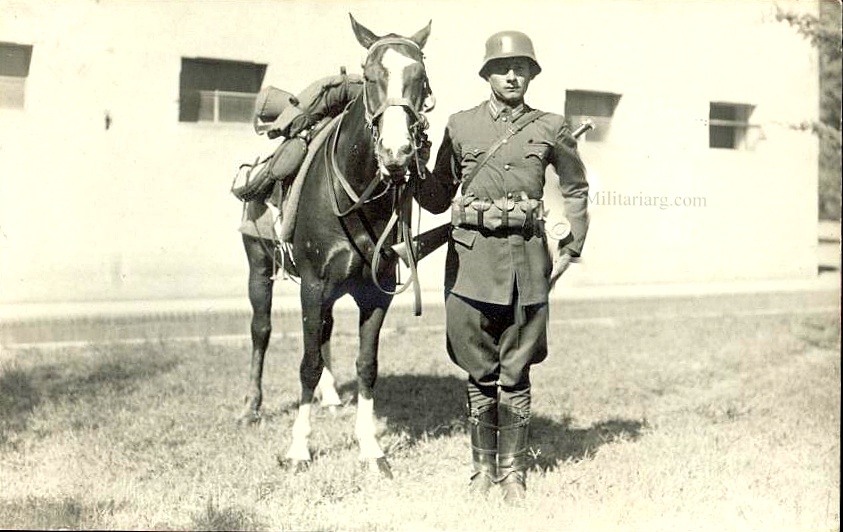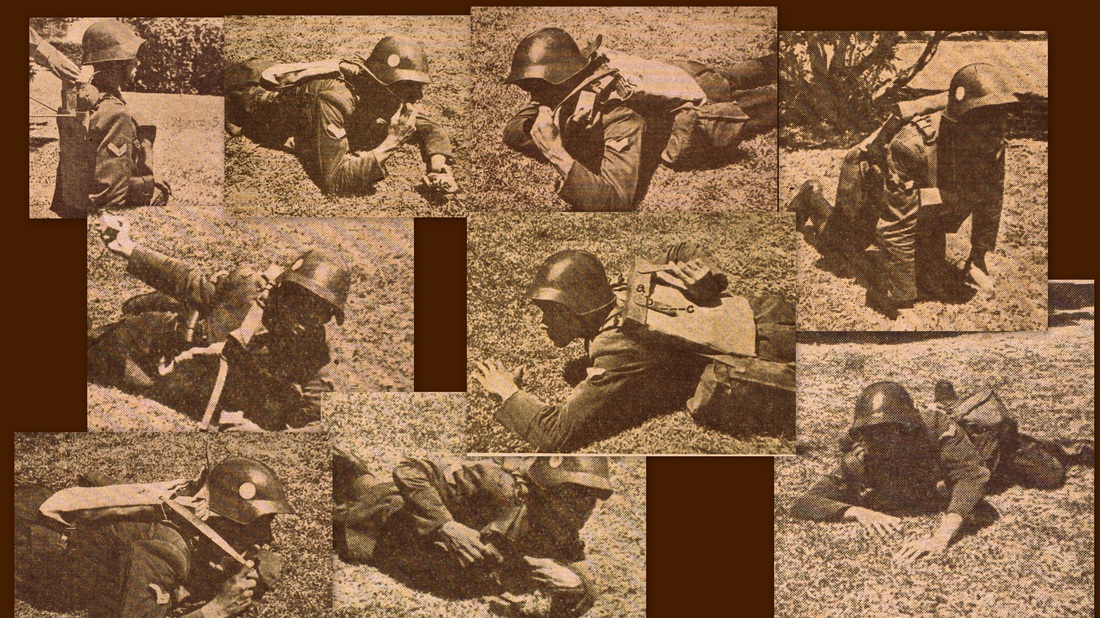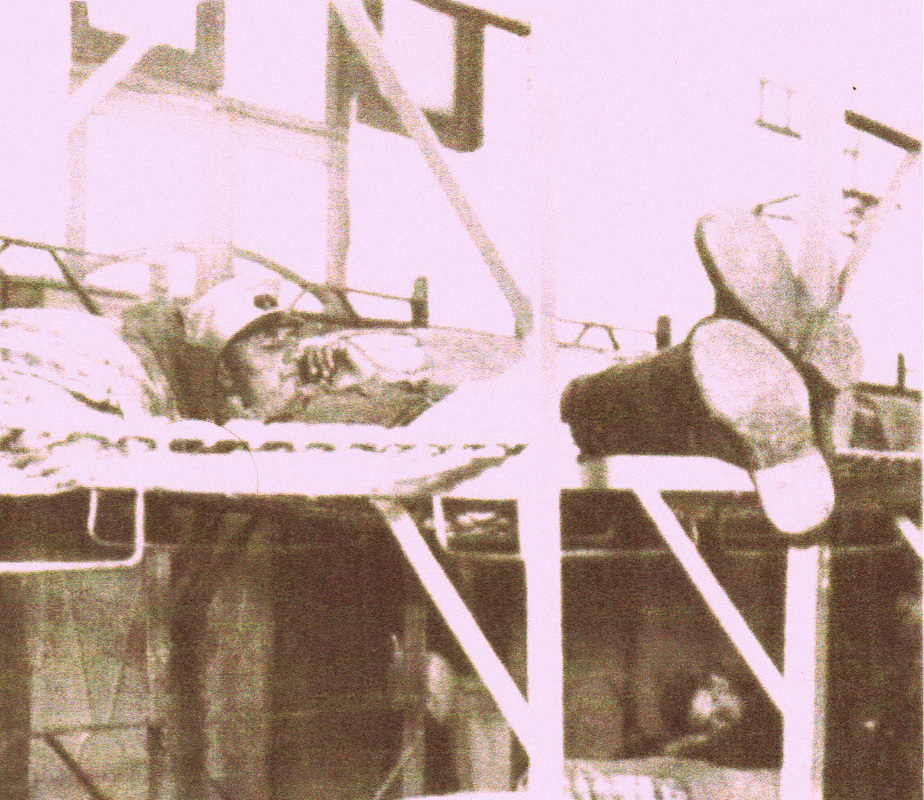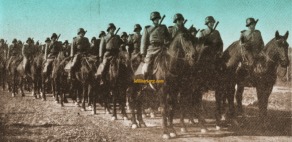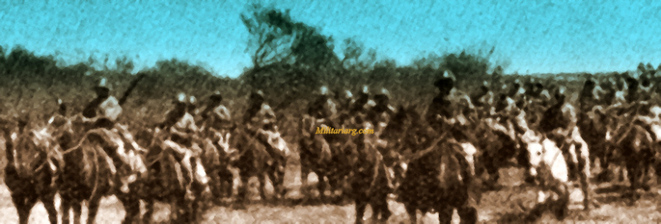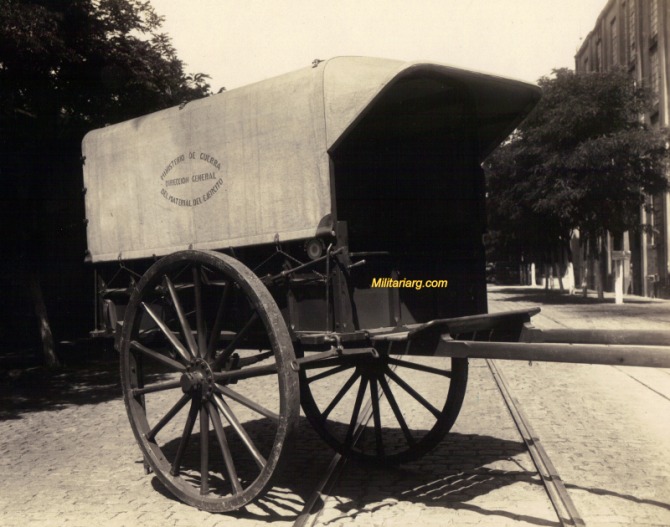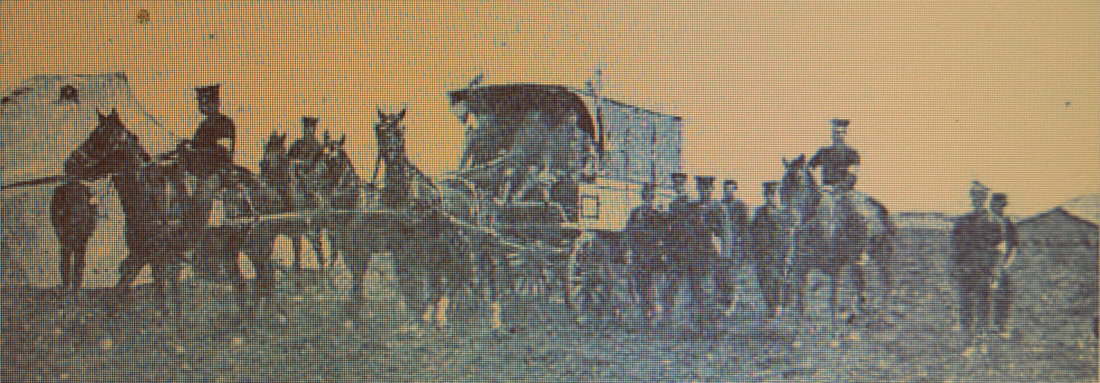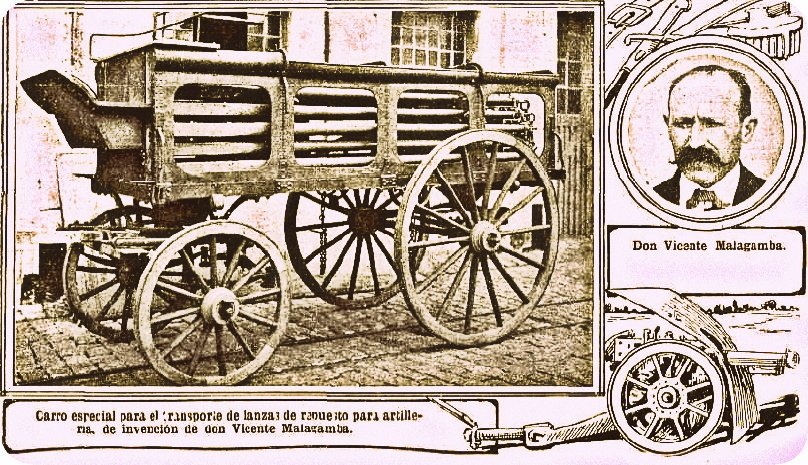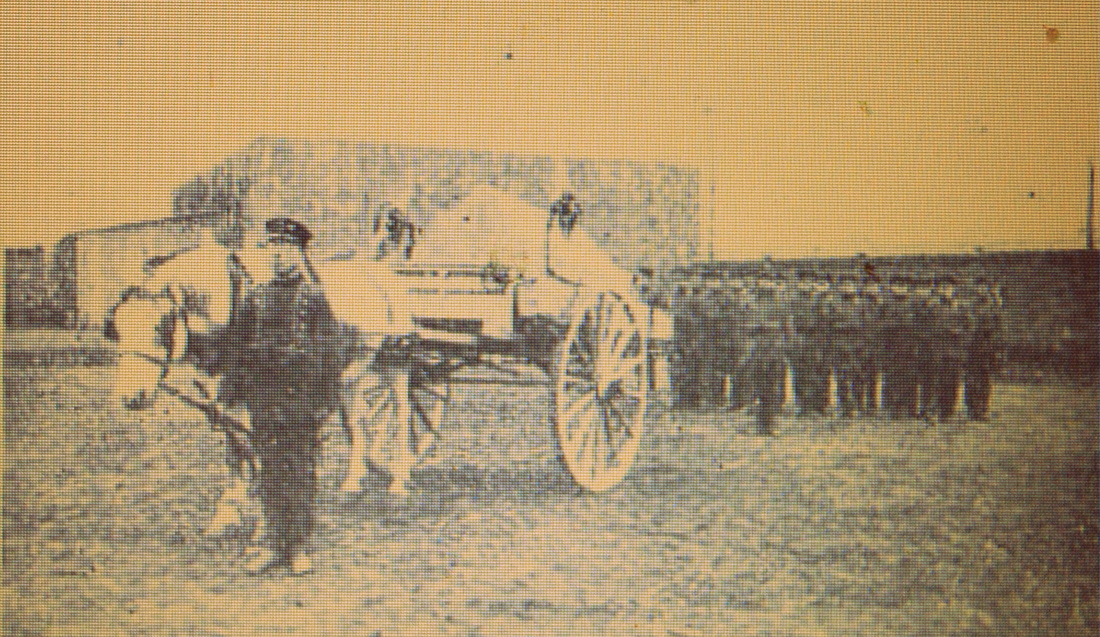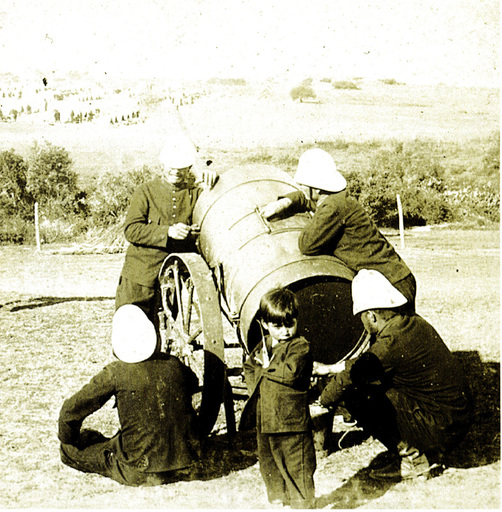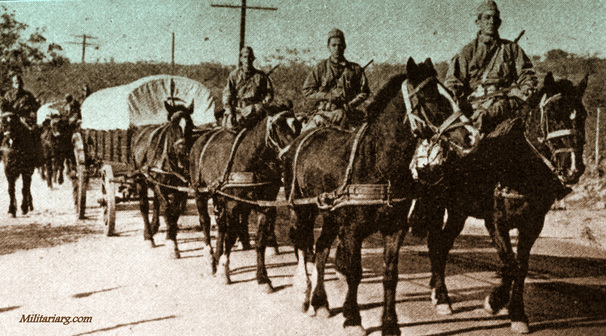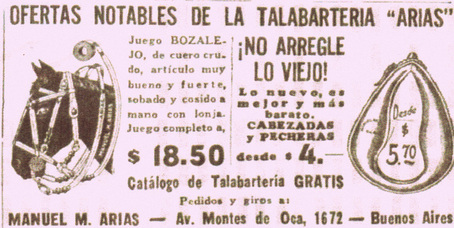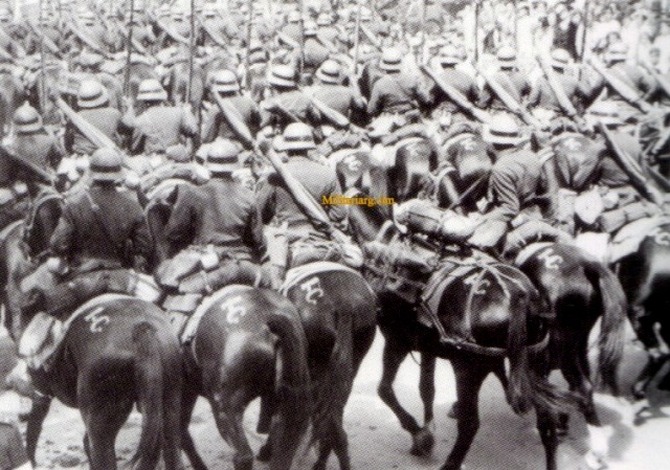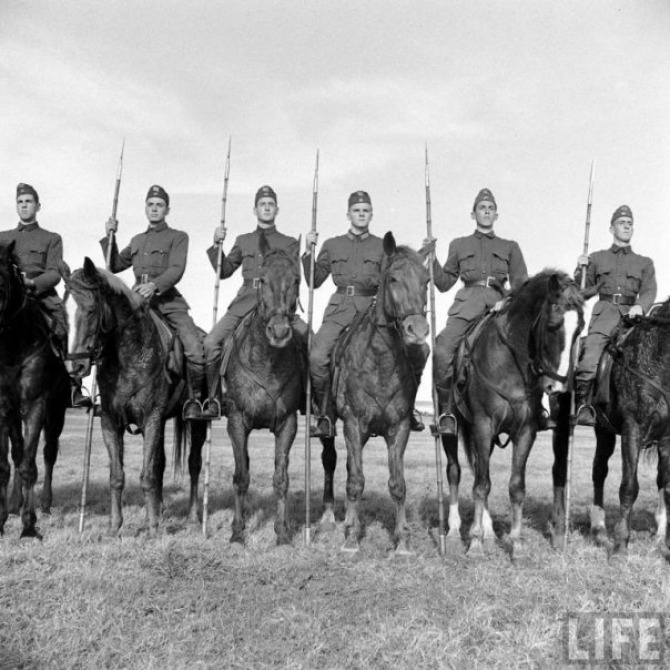Two icons of the Argentine Caballeria. Colonel Hilario Lagos (1806 - 1860) and his son (1840 - 1895) of the same name and rank. Hilario Sr., fought in the War against the Empire of Brazil in 1828 and continued his exploits in endless battles and campaigns as Colonel of the Argentine Confederation until shortly after 1852. His son followed the military career in the National Army, and like his father, starred in several campaigns and Indian Wars.
It would be difficult to synthesize the history of the Argentine cavalry or its innumerable actions, its tactics as an almost entirely cavalry army until the mid-19th century, and its contributions to the country. Argentina itself has a great equestrian tradition with talented riders that have shown their bravery throughout history.
At the beginning of the 20th century the modern cavalry was formed based on European tactics brought back by military personnel who spent time training in the Old World. For example, in a complete fluke of Argentine history, Lieutenant Pedro Pablo Ramirez went to Germany for training with the Fifth Hussars cavalry in Kaiser Wilhelm's Prussian Army. He actually fought in WWI as a member of the Reichleer German Imperial Army returning to Argentina with an advanced rank as a specialist in cavalry tactics. Some time after the war, Ramirez briefly became president of Argentina.
Horseback Grenadiers circa 1900.
A squadron of the Argentine Cavalry awaiting orders to charge. All cavalry regiments carry lances, small Mauser 1891 carbines, and sabres. Observe the M1910 spike helmet.
Cuirassiers, Heavy Cavalry. Caras y Caretas 1937.
Towards the end of the 19th century, the appearance of the Gatling machine gun (capable of firing 200 shots per minute) along with the polygonal cannons and rifles, etc. marked a definitive before and after in modern warfare. This also saw the decline of the romantic cavalry charges that were seen during the Franco-Prussian War that had ended in so many authentic massacres.
From there the cavalry began to transform into armored units, although there were still some legendary cavalry charges in the world wars. Those charges may have been anachronic but were filled with the spirit of body and bravery like in an episode of 1942. Among the sunflowers in Isbucensky the Italian cavalry regiment of Savoy, armed only with sabres, overcame 2 Soviet battalions using machine guns.
Sources: World War I in Photographs by J.H.J Andriessen
Universal Military Service in Argentina by George Marvin.
Supplementary info found on Wikipedia
Sources: World War I in Photographs by J.H.J Andriessen
Universal Military Service in Argentina by George Marvin.
Supplementary info found on Wikipedia
4th and 8th Cavalry and Horse Grenadiers. Photo: 1903 "Caras y Caretas"
Right: Carlos Luis Federico de Brandsen by Jean Philippe Goulu. Center: 7th Cavalry Regiment, (1826). Left: Horse Granadier (1812-17), by Guillermo Roux.
Right: 16th Lancer Regiment, (1825-28). Center; Cuirassier Heavy Cavalry circa 1910. Right: Corporal of the 8th Cavalry. E. Marenco.
Krupp Gun Limber.
Photo 1916.
Argentine Cavalry Sword model 1898 (Troops).
CAVALRY & HORSE EQUIPMENT
Cavalry Leather Gaiters.
1940s, Argentine Cavalry Horse Collar Halter Head Harness.
Antique Rossi Caruso & Co Argentina Officers Military Field Saddle
Lance model 1895 made by Weyersberg Kirschbaum Solingen.
Center of gravity line between horse and rider.
Caras y Caretas 1935.
Caras y Caretas 1930s.
Caras y Caretas 1916.
Officer and Troop Horses.
Argentinian Cavalry. WWI Era. Caras y Caretas.
1945 ammo vest.
1931. Horse Granadiers. Caras y Caretas Magazine.
11th Cavalry Regiment (1946)
13th Cavalry Regiment - Toay - La Pampa 1949.
1900s Rio 4to and Puerto Borghi Arsenals:
Drag Hunting - 9th Cavalry Regiment. Photos "1903 Caras y Caretas":
Carriages and Wagons
Military Ambulance-Wagon. Circa 1914.
Artillery replacement wagon. Diseign by Vicente Malagamba. Caras y Caretas Magazine. 1913.
Medic Wagon.
Sanitary wagon.
Left: Regimental Wagon M1915. Right: Ponton Wagon.
Survivor Regimental M15 type wagon from the Patricios of Obligado Battalion Reenactment Group. Note the M1910 Water Canteen on the side. Many thanks to Oscar Turone for sharing this important image with us.
1916. Field Kitchen Wagon type WWI Imperial German 'Gulaschkanone' . Engineer Corp.
Karl Rudolf Fissler of Idar-Oberstein invented a mobile field kitchen in 1892 that the Germans came to refer to as a Gulaschkanone (Goulash Cannons) because the chimney of the stove resembled ordnance pieces when disassembled and limbered for towing. Wikipedia.
Karl Rudolf Fissler of Idar-Oberstein invented a mobile field kitchen in 1892 that the Germans came to refer to as a Gulaschkanone (Goulash Cannons) because the chimney of the stove resembled ordnance pieces when disassembled and limbered for towing. Wikipedia.
Frigorific Wagon
Frigorific truck and trailer.
Studebaker US6 and Gulaschkanone/AR Field Kitchen. Circa 1950.
1900s WaWagon. Photo: "Soldados 1848 - 1827".
6Th infantry. Mercedes (1939)
DGFM Field Kitchen
Logistic wagon from the 4th Sapeur Enginner Battalion.
6th Infantry. 1946. Ammunition wagon.
6th Regiment Infantry of Mercedes (1939)
Artillery 1945.
Stagecoach - diligencia.
Villalonga Wagons.
Cavalry Prints
"Soldado de Monte" (Mount Soldier-Chasseur), poster print by the Argentine artist Marenco.
Argentine Army Cavalry Ration Bag
Lancers
Interesting photo from Colin Webster's book "Argentine Mauser Rifles 1871-1959". The photo is from 1924.
Photo Life Magazine
lance point model 1892.

